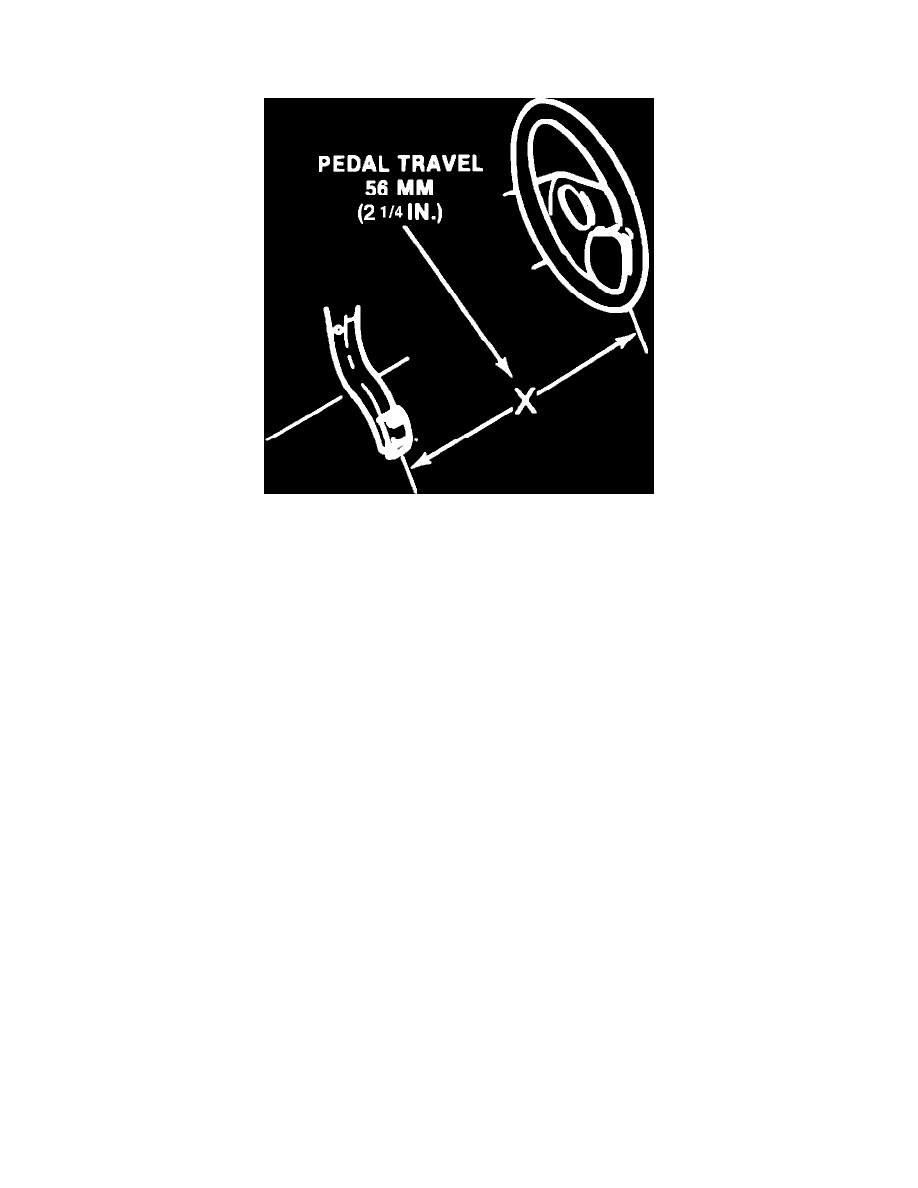Merkur Xr4ti L4-140 2.3L SOHC Turbo (1985)

Brake Pedal Assy: Adjustments
Brake Pedal Travel
Fig. 5 Measuring brake pedal travel
1.
Ensure that parking brake is fully released and that master cylinder is filled to correct level.
2.
Install brake pedal effort gauge on brake pedal pad and ensure rear brakes are fully adjusted by applying a 110 lb. load to pedal.
3.
Hook a steel measuring tape to brake pedal, then measure and record distance from brake pedal free height position to reference point at 6 o'clock
position on steering wheel rim, Fig. 5.
4.
With tape still hooked to brake pedal, depress brake pedal by pressing downward on effort gauge. Apply a 25 lb. load to center of pedal and
measure distance from brake pedal to fixed reference point on steering wheel rim parallel to centerline of steering column.
5.
The difference between brake pedal free height and depressed pedal measurement under 25 lb. load should be 2- {3/16} - 2- {1/4} inches.
6.
If pedal travel exceeds specifications, make several reverse and forward stops and, if brake pedal travel is not within specifications, make second
series of stops.
7.
If pedal travel is still not within specifications, remove brake drums and check brake adjusters to ensure they are functioning. Check brake linings
for wear or damage, replacing parts as necessary. Adjust brake linings outside diameter to approximate inside diameter of brake drum using
suitable brake adjustment gauge.
8.
If all drum brake adjusters, brake drums and brake linings are functional and brake travel is not within specifications, check pedal assembly for
missing or worn bushings or loose attachments.
9.
If brake pedal travel still is not within specifications, perform brake bleeding procedure.
